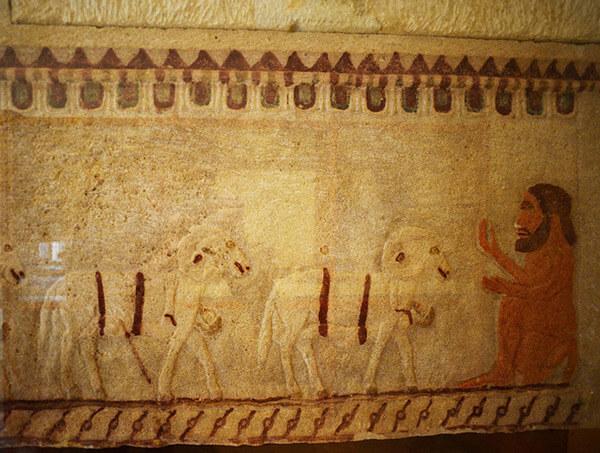
Salty and slightly acidic, Feta PDO is a cheese with a history as rich as its taste. A true product of its environment, its recipe and production method reflect the unique terrain of Greece and are grounded in the cumulative know-how of more than two millennia.
History and origins
Not many foods can boast a history going back over 2000 years, but every time you buy feta you will be eating a cheese as familiar to Homer and Alexander the Great as it is at home in a modern day salad.
Though the name feta is of 17th century origin and refers to the cutting of the cheese, it appears in far more ancient literature. A primitive form of feta is even mentioned in the Odyssey, where the hero Odysseus takes the cheese made by the cyclops Polyphemus whilst escaping from his cave. Today, feta is the flagship of Greece's geographical indications and accounts for roughly 10% of Greek food exports, a testament to its outstanding international reputation.

Its traditional production methods are linked directly to the specific climatic conditions of the country. With its steep mountainsides and its hot and dry climate, there was little land suitable for widespread cattle rearing. Instead, the Greek people turned to hardy sheep and goats that could thrive in these difficult conditions.
Though this might have made life hard for the ancients, it has given modern consumers cause to celebrate. This is because the particular flavours of feta are only possible when sheep and goats are grazed on the unique flora of Greece. There are over 6000 different species of plants growing in the country, of which 15% are unique, a far higher proportion than many geographically larger nations. This biodiversity, when combined with traditional production methods, is a key reason for why true feta can only be made in Greece.
Production process
Feta PDO is only made with the milk from native breeds of ewes and goats, this is what lends feta its familiar white colouring and is what can give it a slightly peppery flavour. The milk used to prepare feta is collected seasonally and must have a fat content of at least 6%. It can be prepared both from pasteurised and unpasteurised milk but colourants, preservatives, lacto-proteins, casein salts or condensed or powdered milk are never added.
After being delivered to the dairy, the milk is coagulated and placed into moulds for straining. Traditionally these have a large number of small holes and no pressure is applied during the straining process. Once it has been removed from the moulds, it is sliced and the surface of the cheese is covered in a coarse-grained salt. During this stage, microorganisms develop on the surface of the curd which contribute to the flavours of feta.
The ripening of the cheese takes place in two stages. In the initial phase, brine is added and the containers are placed in chambers under strictly controlled temperature conditions. Monitored carefully, the air in the chamber must be at most 18°C and the relative humidity should be no less than 85%. This ripening stage can last up to 15 days.
The second ripening stage takes place in refrigerated conditions where there is a constant temperature of 2-4°C. The total time taken for the cheese to ripen is at least two months. It is only at this point that the cheese will have the rich taste and smell that sets feta apart.
More information
Feta PDO – legal specifications
